IRF
IRF Uppsala
RPF programme
IRF-U Staff
Seminars
Courses
PhD studies
Examensarbete
Workshops
Cluster
...EFW
...Quicklook
Cassini
Rosetta
Solar Orbiter
Intranet
| INSTITUTET FÖR RYMDFYSIK | UPPSALA |
 |
|
| Swedish Institute of Space Physics | (59°50.272′N, 17°38.786′E) |
MSc thesis (45c)/Examensarbete (45hp)
Simulations of Ion Measurements on Juice
Student: Derek van Winden, Uppsala UniversitySupervisors: Mika Holmberg (DIAS, Dublin), Anders Eriksson (IRF, Uppsala), Gabriella Stenberg Wieser (IRF, Kiruna)
Period: 2023
Abstract
The ESA Jupiter Icy Moons Explorer (Juice) was launched on April 14 2024 and will arrive at Jupiter and its icy Galilean moons Callisto, Europa, and Ganymede in 2031. One of the instruments carried onboard is the Jovian plasma Dynamics and Composition analyser (JDC) provided by IRF in Kiruna. As a part of the Particle Environment Package (PEP), JDC is a particle detector to measure the energy, mass, charge and arrival direction of ions and electrons in the Jovian magnetosphere. Spacecraft charging caused by interactions between the spacecraft and its surrounding plasma environment will in some environments influence JDC observations because the electrostatic field of the spacecraft can affect the trajectories and energies of charged particles, resulting in distorted measurements, particularly for the lowest energy particles.
In this report, we show the results of spacecraft charging and instrument simulations performed in the Spacecraft Plasma Interaction System (SPIS) for the solar wind and Earth’s magnetosheath—two environments that Juice will encounter at the start of the cruise phase. We found that the conductive surfaces that cover the majority of the spacecraft become positively charged as a result of a large photoelectron current in both the solar wind and magnetosheath environments. We show that these surfaces are expected to reach potentials around 9 V in the solar wind and 4 V in the magnetosheath. The four radiators on Juice that are covered with dielectric paint and shaded by the sun shield become negatively charged in both simulated environments. The radiator potentials can be as low as -40 V in the solar wind and -100 V in the magnetosheath. We also conclude that due to blocking by the spacecraft main body, the ion population cannot be sampled in the solar wind unless a spacecraft roll is performed. Furthermore, due to the high ion f low energy, spacecraft charging will not influence JDC measurements in this environment.
In the magnetosheath, the ion population can be sampled by JDC, and we identified three distortion mechanisms: (1) repulsion by the main body, (2) attraction by two of the radiators, and (3) repulsion by the MAG boom. Of all the distortion modes, the one originating from a negatively charged (-67.8 V) radiator close to JDC is the strongest, affecting ions with energies above 80 eV. The least powerful but most prevalent mode is the repulsion of ions by the main body. Our results can be compared with future in-situ measurements to identify distortion mechanisms well ahead of the science phase in which the scientifically important measurements will be carried out.
Results
![[SPIS ion trajectories]](spis_jdc.png)
Example of ion trajectories to JDC by the SPIS simulations.